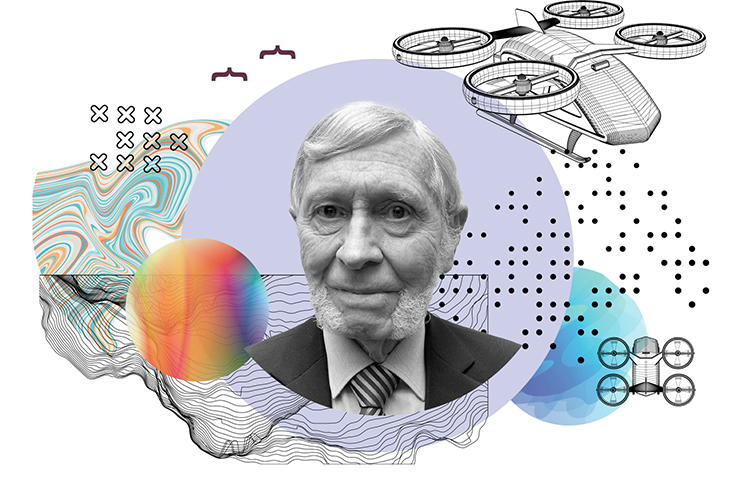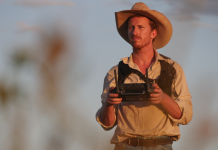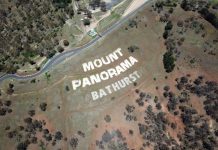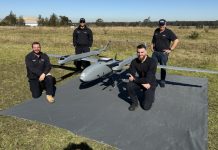Peter Smith: strategist
One of the minds that built Australia’s modern aerospace industry says the benefits and opportunities of the next aviation boom are potentially huge, but are not where you might think.
Visit the biennial Australian International Air show at Avalon, near Geelong and you’ll notice 2 things. Most of the fully assembled aircraft come from overseas, but there’s also a huge and thriving Australian industry in aviation products, structures and systems, ranging from electronic flight bags to CANBUS wiring harnesses and composite airframe components. Peter Smith is one of the people who made possible this $A4 billion industry (in 2021) consisting of more than 800 firms, up to 16,000 direct and indirectly related jobs and Boeing’s largest manufacturing centre outside the US.
Smith can’t remember a time when he wasn’t fascinated by aircraft. His first solo was in a de Havilland Tiger Moth although he protests, ‘I’m nowhere near as old as that would suggest! I was in the Air Training Corps in Queensland and there was a state-based scholarship for cadets to learn to fly. We were brought down to Archerfield where we learnt on these already ancient biplanes. So I have about 50 hours on the Tiger Moth.’
He chose the life of an engineer rather than a pilot but ended up as an executive with a reputation for clear thinking and sharply focused foresight. He spoke to Flight Safety Australia in his capacities as strategic advisor to Swinburne University of Technology Aerostructures Innovation Research Hub and interim strategic advisor to the Australian Advanced Air Mobility Cooperative Research Centre.
How did your career bring you to where you are today?
Smith: I started, as all aircraft-obsessed kids do, with the fantasy that I was going to be an aircraft designer. I did a degree in aeronautical engineering but realised that while I would be OK as a designer, I would be lousy as an engineer because I was more interested in the overall concepts of the aeroplane rather than the detail of how you build it economically and efficiently.
I first worked in the agricultural aircraft business where there were a couple of small manufacturers in Australia. But it became obvious that these manufacturers were being swamped by Cessna and Piper, who were coming out with specialised aircraft. So I got a job as a project officer at Hawker de Havilland, one of 3 major aerospace companies at the time. With them I progressively drifted from technology-based activities to planning and strategic activities. It was a time when the industry was in transition from the World War II model of build-to-blueprint for the military – by the 1970s, the military didn’t need so many aircraft.
It turned out that predicting future needs, looking at Australia’s capabilities, putting together proposals and presenting them to the right people was what I was best at. I was part of a younger generation that got kicked upstairs quickly (into management) and we started doing things like getting into the international aerospace marketplace, as specialists in aerostructures, rather than building airframes that the rest of the world was also making.
I was one of the people who were pushing the concept that we had to get out of build-to-blueprint. We had to move from just being manufacturers to participating in design for efficient manufacture, then moving to co-design so we work on the basic design. The final stage would be taking responsibility for research, materials and manufacturing techniques so that we became joint venture partners rather than just subcontractors. And that’s what happened: by the late 1990s early 2000s, there were handshake agreements with Airbus and Boeing for projects worth $A5 billion.
How did you get involved with uncrewed air systems?
In the early 2000s, I was headhunted to run AWA Defence and later BAE Systems Australia. After that phase I set up as a strategic consultant and independent director – I know lots of people say that, but I made it work. I became chairman of Aerosonde, at that time Australia’s largest maker of uncrewed air vehicles (UAV). And how time flies; I’ve been in this ‘new’ field for more than 20 years. In that time it has spawned a new technology – advanced air mobility (AAM) – using the technology of uncrewed aircraft for a new form of passenger air transport.
As a strategist, what do you make of the predictions about AAM, particularly as we are now in the time when the original boosters of this idea were saying we would be using these futuristic vehicles as everyday transport?
In 2015, somebody at Uber decided that because more and more road-based Ubers were getting hung up in congestion, then maybe you could have flying Ubers going over the congestion. There were sufficient advances in aerodynamics, propulsion, lightweight materials and ATC so you might be able to do that. There were wonderful Jetsons-like images of air vehicles taking off and landing on skyscrapers with a cost and efficiency of operation that helicopters couldn’t match.
By 2016, the concept of eVTOL (electric vertical take-off and landing) as it was called launched in an incredible fashion. Momentum built to the stage that by the early 2020s, there were over 400 eVTOL projects around the world, 99 per cent of them by start-ups. But when you are talking about thousands of air vehicles in every city – there was talk of 2,000 of them in Los Angeles – at 400–500 feet, in among the buildings, taking off and landing every few minutes and, therefore, acting as fatigue creating devices, it becomes a problem beyond the technological ability of any start-up.
Uber were the right people to sensitise the world to this possibility, but they were utterly the wrong people to handle what was a complex, multisystem challenge. [Uber sold its Elevate division to air vehicle start-up Joby for a loss in late 2020.]
Australian AAM needs to be longer range and able to operate into basic strips, or stops.
So where do you see the future of AAM developing?
Ninety per cent of the people I talk to about AAM think immediately about the air vehicle, as I do too, because I’m a prisoner of my background – and we don’t think about the total system. It’s not just the air vehicle but the air operations, air traffic management and ground infrastructure. That’s like thinking about trains without considering tracks. Much of the work that has to be done is about building tracks in the skies and building the equivalent of railway stations. Because the vehicles are VTOL, there will be stops, more than strips. When you think about the whole system, like a railway, the answer that emerges is different from what’s being anticipated in larger more compact nations. They’re thinking urban, we’re thinking regional.
Why do you think regional AAM will happen first?
One of the reasons I think Australia should be going into regional AAM is not only the need, but the greater simplicity of the safety case.
My growing concern was that the initiatives in AAM were all about high-density complex city canyon operations, and the safety cases were multiple – air, ground comms, cybersecurity. It became obvious that air traffic management and certifying and operating criteria would take the authorities years to develop. That’s not because the authorities were slow, it’s because everything was so different from everything before, not only in character but in potential volume.
The other factor is how the status quo of regional aviation is vulnerable, looking at the age of fleets, the age of LAMEs and the increasing poaching of pilots from regional to national to international airlines. At the same time, operations like AMSL (See Flight Safety Australia Autumn 2024) are starting to emerge.
It’s a great opportunity to imaginatively use emerging technology to provide a better, safer future for regional and remote Australians.
Does this represent a threat or an opportunity to the Australia aerospace industry?
Absolutely an opportunity. Australian AAM needs to be longer range and able to operate into basic strips, or stops. There will be engineering challenges of dust, monsoonal rain and heat. Almost all the world’s AAM projects are urban, very few are looking at longer range – by our aerospace developers working with our regional aviation operators, we can do this.
Other countries that would have a similar need for regional AAM, Canada, for example, don’t have anything near the combination of capabilities Australia has – we’ve got people who can build the air vehicles, people who can do the air traffic management and we’ve got regulators who are thinking strategically about the future. So we have the opportunity to do something that is not just good for Australia but look at international marketplaces for economies of scale. It’s not just distance, it’s difficulty of travel. Think of all the archipelagos – Indonesia and the Philippines – and of Africa, where uncrewed aeromedical has been adopted very quickly.
What does AAM mean for Australian regional aviation?
There was a eureka moment on 7 September last year with the Federal Government’s Aviation Green Paper to 2050. All the way through, particularly when it talks about regional aviation, simplification of operations and industry development and skills, it keeps bringing up AAM, saying it is potentially a solution. There’s a chapter saying this is an opportunity to build and operate a new aviation industry for Australia with export potential. Since then, the concept of a Cooperative Research Centre to integrate regional AAM development has accelerated. I’ve been very involved, going to roundtables listening to potential users – aircraft operators, airport operators. We went around Australia, making sure we weren’t drinking our own bathwater, talking to regional airlines, charter, aeromedical. One of the things that becomes very clear is when you look at a map of regional airline routes, they’re not really regional – they’re hub and spoke from regional centre to state capital. AAM could change that by introducing genuinely regional routes, from centre to centre.
The first generation is going to have 4 passengers and a pilot, be short range and changing batteries a lot – it will be a bit like Qantas in the 1920s – but it will gather experience, and technologies will mature into a second generation, with better propulsion systems using hydrogen, better batteries and adoption of remote piloting blending into air traffic management. Instead of one pilot for every AAM, there will be someone on the ground flying, or managing, up to 30 aircraft. This system will be more economic and safer. The third stage is at the point where artificial intelligence, cybersecurity and quantum computing come together and the whole system becomes autonomous. It’s a great opportunity to imaginatively use emerging technology to provide a better, safer future for regional and remote Australians.
Instead of one pilot for every AAM, there will be someone on the ground flying, or managing, up to 30 aircraft.






Comments are closed.